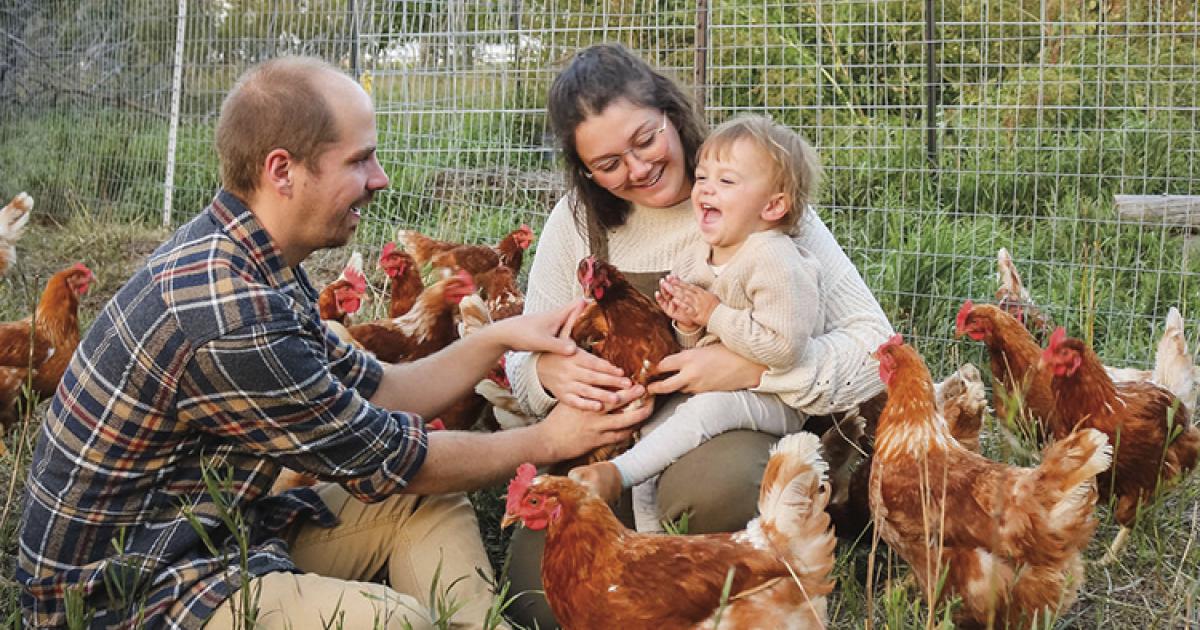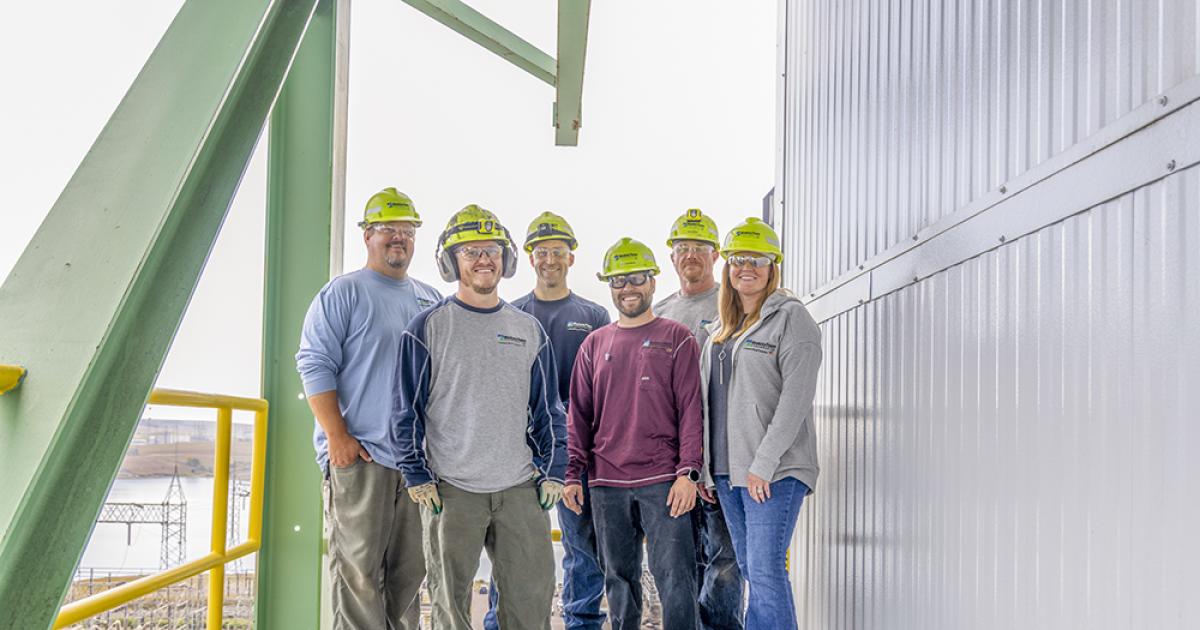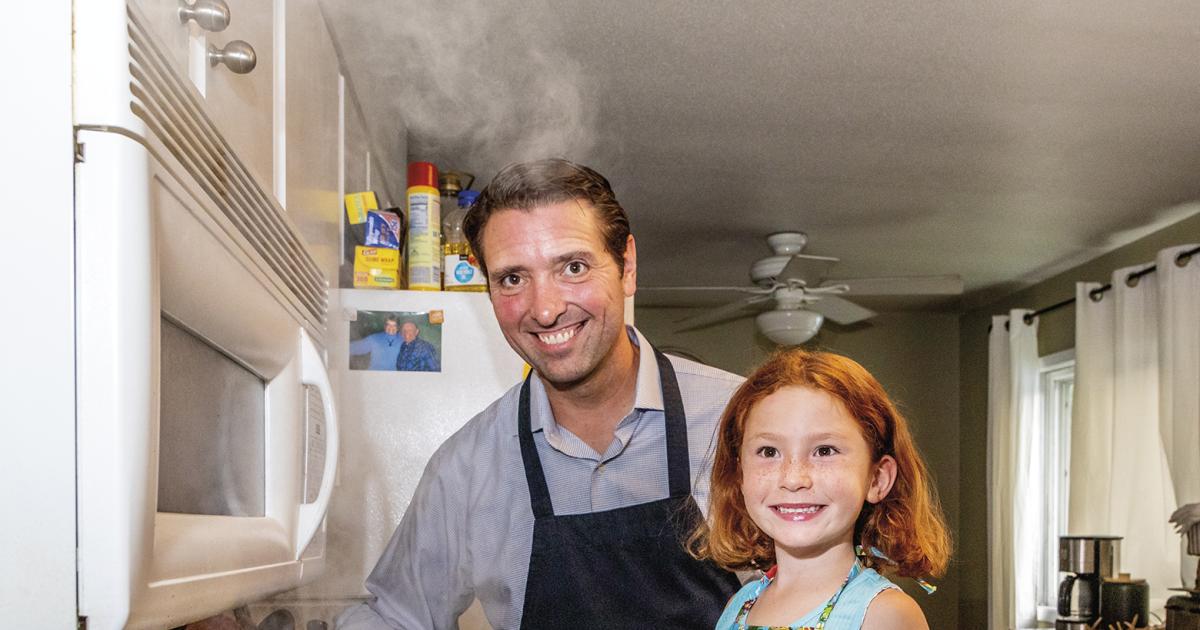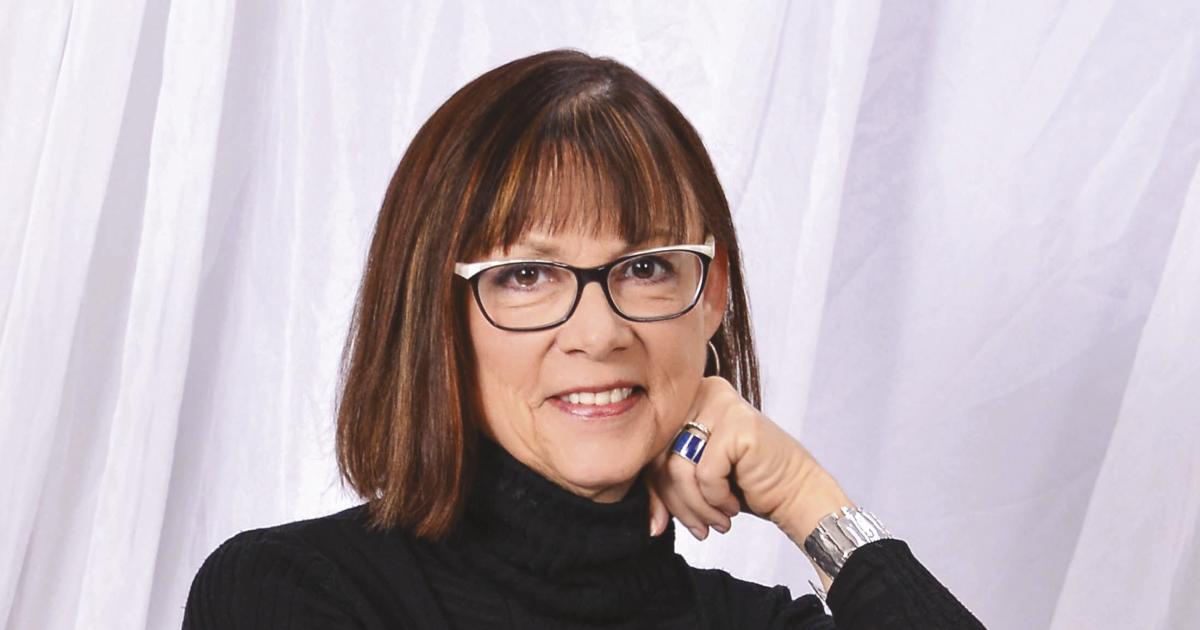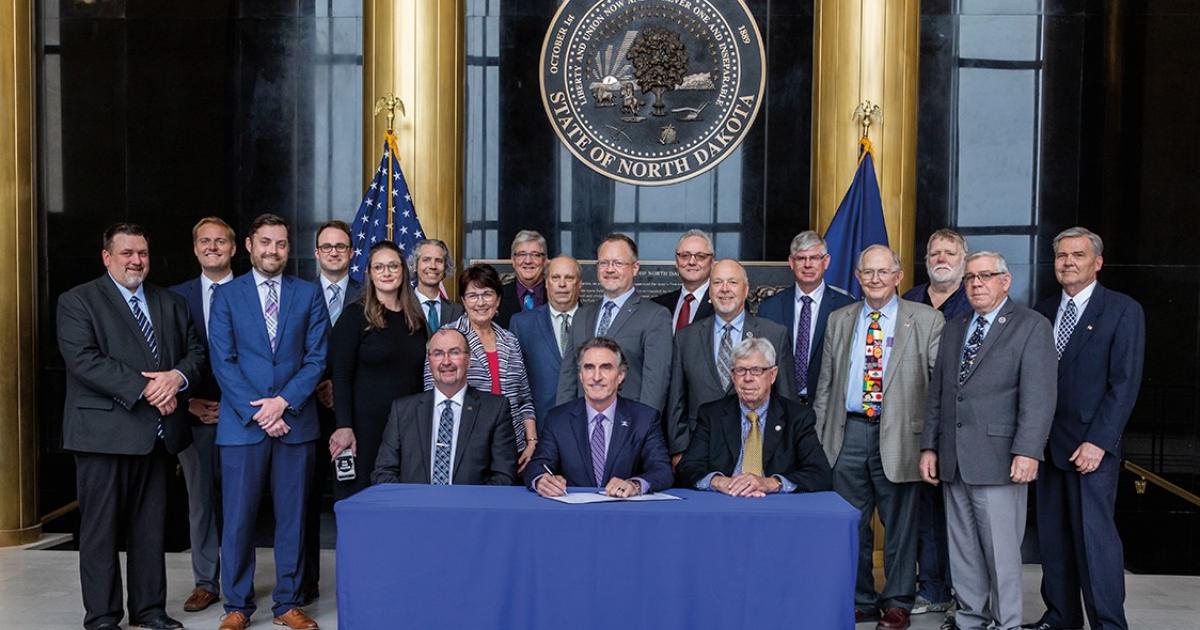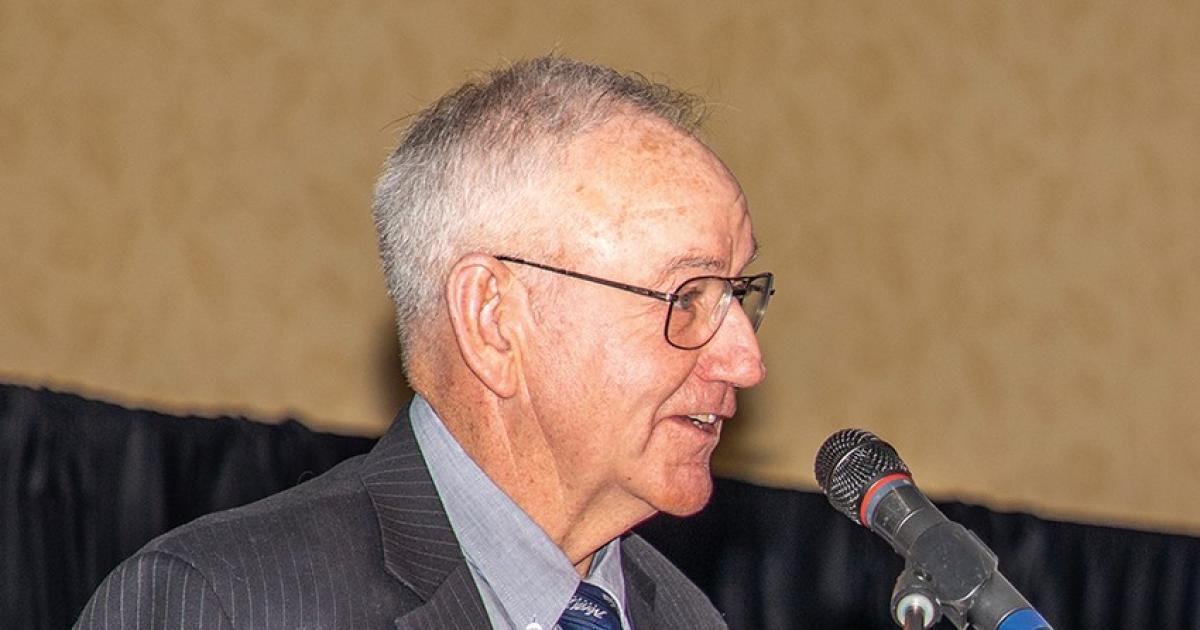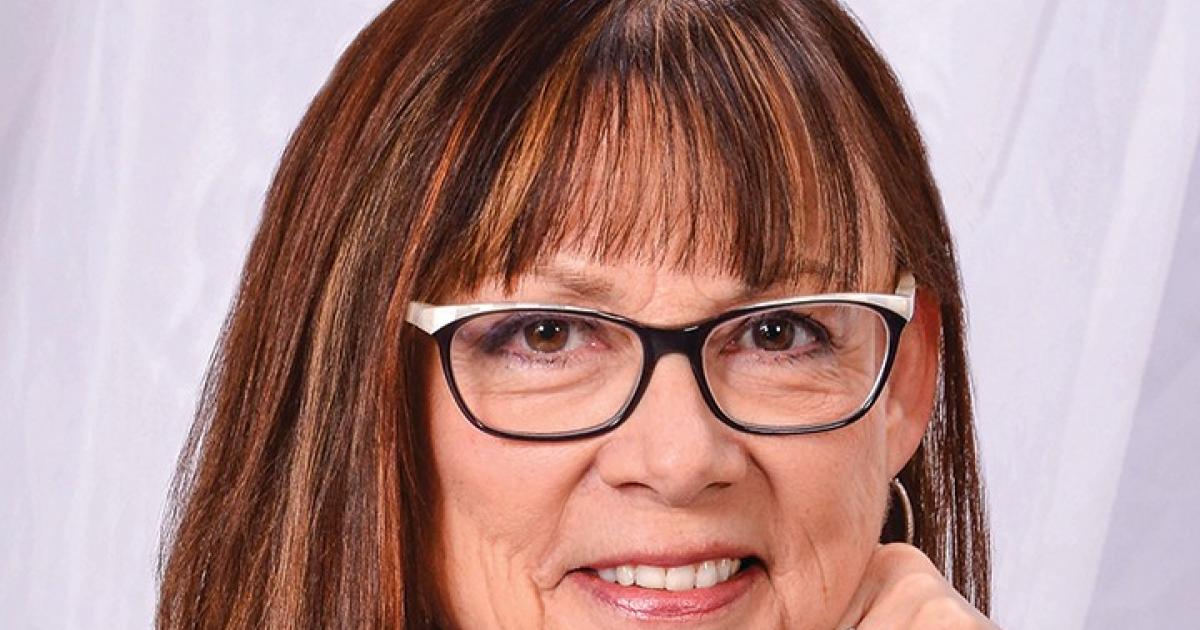After recently returning to the family farm, Joanna Larson of Sheyenne aims to supply fresh-cut flowers and produce to regional florists and the local farmers market, helping to regenerate the local food system. Photo courtesy North Dakota News Cooperative
For 27-year-old Joanna Larson, the desire to return home to take part in the family farm operation in Sheyenne has as much to do with building community as it does farming. A strong independent streak also doesn’t hurt.
She’d like to see things done differently and wants to put her stamp on the farm and further afield.
That includes eventually transitioning to more sustainable agricultural practices at the family farm.
“I’m about food, not fuel,” Larson says about the widespread practice of growing the energy and commodity crops of corn, soybeans and wheat across the state. “I know it’s profitable and know that if you’re careful you can build soil fertility, but I don’t think that long term that’s right for our world or our country.”
Generational shifts
Larson is one of a small but growing number of new and beginning farmers coming of age as their baby boomer parents retire or desire to retire, and many would like to see a renewed focus on the local and the sustainable.
They see the hollowing out of rural communities, the spread of food deserts and grocery stores closing in a sea of bountiful agricultural production, and wonder if that must be the reality.
Wife and husband team Julia and Kelly Seiller, who completed a Farm Beginnings course offered at the Foundation for Agricultural and Rural Resources Management and Sustainability (FARRMS) in Minot, are new farmers hoping to supply diversified produce to their local community.
Located just west of Williston, the Seillers plan to tap into the local farmers market and establish a community supported agriculture (CSA) subscription service. They also hope to eventually have in-ground greenhouses for year-round production.
“We’ll be providing something that’s missing up here, which is access to fresh fruits and vegetables,” Kelly says. “Early in the year and later in the year, everything you get from a place like Walmart goes bad within a week.”
Larson also went through the FARRMS course, but her experience started young on her family farm, along with 4-H and helping establish Sheyenne’s farmers market over a decade ago.
After obtaining a degree in agricultural and biosystems engineering at North Dakota State University, she and her partner worked in the Seattle area for several years, and most recently made their home near Stockholm, Sweden, where she studied agroecology.
The field of study “focuses not just on the farm, but beyond the farm gate, and how our agriculture systems are interconnected into rural development and sustainable communities,” she says.
Larson is starting with a crop of wholesale cut flowers to sell to florists, as well as beef cattle, after purchasing her first bull this spring. Soon, she will ramp up vegetable production to sell at the local farmers market.
A big priority is establishing a farm store in town with better access to fresh produce. Sheyenne currently has no grocery.
“That’s a key piece for me,” she says. “I saw living in Sweden what small grocery stores can accomplish.”
Increase in beginning, women farmers
While a five-year agriculture census released by the U.S. Department of Agriculture in February shows 11% growth in the number of beginning farmers, only 300,000 across the country are under the age of 35.
A much larger cohort of 1.3 million farmers are 65 or older, meaning younger people will eventually need to take over those farms or they’ll be bought and rolled into larger industrial-scale farms.
In North Dakota, the latest census data shows the number of farms has decreased by 5%, while the average farm size grew 3% – up to 1,537 acres – since 2017. A total of 11% of farmers in the state are under 35, and a large and growing segment of farmers are women, making up 30% of producers.
Desiree Carlson is one of them. A transplant from Minnesota who has established Ester’s Acres outside of Minot, she originally studied to be a teacher then relocated to North Dakota with her husband in 2019 to his family’s farmstead.
She focuses primarily on chickens, eggs and lamb, and sells her products at farmers markets, with CSA subscription programs and through direct-to-consumer sales.
Carlson also helps other farmers as an educator with the Strong Farms Incubator, a program started five years ago to nurture a new generation of farmers and build a sustainable localized food system.
System barriers, marketing challenges, red tape
Outside of Carlson’s busy farmers market season, having a market for her products is complicated the rest of the year. She often feeds excess eggs to the pigs on the farm because there is no easy route to get them to consumers.
Having a larger network and potentially an umbrella for marketing products from local farms would “be really great,” Carlson says, and there is an increasing amount of federal money available for establishing local food systems.
Barriers such as local cottage food laws, which require commercial licenses for certain products like eggs and produce, limit farmers’ ability to sell through such a network, leaving direct-to-consumer sales the only viable option.
And while some online sites showcase what local farmers produce – a local foods directory and map operated by the N.D. Department of Agriculture, a site called ShopND and the Pride of Dakota website – these can be out of date and steer consumers directly to the producer without reducing the sales and marketing workload.
Plus, only a trickle of customers typically come through those sites, the farmers say.
Julia is looking into potentially starting a local food co-op. It would be “fantastic,” she says, if something was set up to help local producers get their products to consumers, reducing some of the need to manage their websites and market products by themselves.
Marketing as individual farmers takes a lot of time, says newer farmers Adam and Apryl Mawby of Souris. They operate Gardendwellers Farm & Ranch, which produces culinary herbs, garlic, lamb and chicken.
Tapping into the local markets isn’t so difficult, Adam says, but getting more widely known in a way that generates orders from further afield is a challenge.
The Mawbys have toyed with going the influencer route by upping their social media presence, but with farm work and kids to take care of, that idea often ends up on the backburner.
Cottage food laws impact them as well, at least on the herbs and herbal teas side of their business. Consumers can check out what they have on their website, but the Mawbys are not allowed to sell those products online.
“We have to actually hand you the product,” Apryl says.
Ann Olson, who works as the small farm navigator for Strengthen ND, says the local food producer movement can be appealing for those interested in a homesteading or rural lifestyle, but people need to be active entrepreneurs in the current climate if they want to move beyond being a hobby farm.
“If you don’t have a social media presence or your farmers market doesn’t have one, it can be really hard for people to know you exist outside word of mouth,” she says.
Next generation uncertainties
Besides those system barriers, other community-wide challenges can impact success or failure of beginning farmers. These can include a lack of available and affordable housing and child care, as well as the reduction in other services nearby as people retire and new blood doesn’t fill the void.
Within these challenges are many opportunities, Larson says, if they are realized.
“I look around this town and I can see that the implement dealership owner is about retirement age, and who is going to step into that role?” Larson ponders. “Do young kids in high school know that is an amazing career opportunity?”
Larson repeats that litany of potential “awesome” opportunities, mentioning machinists, bars, restaurants and other businesses she knows where the owner is looking to retire, but few are stepping up to take over.
“Who’s going to take those roles and what’s it going to look like for my generation to farm out here if we don’t have those people?” Larson says. “That’s maybe like a 10-year problem, but it’s a problem now because you need to get those people in place.”
___
Michael Standaert, correspondent with the North Dakota News Cooperative, has worked as a journalist and writer for 26 years, first from the Midwest and later from California, Europe and Asia.



